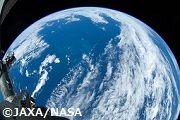| タイトル | ナホトカ号重油流出事故調査:RADARSATの解析 |
| その他のタイトル | Investigation on the accident of fuel oil spill from Nakhodka: Analysis by RADARSAT |
| 著者(日) | 鈴木 靖; 磯野 賀瑞夫 |
| 著者(英) | Suzuki, Yasushi; Isono, Kazuo |
| 著者所属(日) | リモート・センシング技術センター 解析研究部; リモート・センシング技術センター 解析研究部 |
| 著者所属(英) | Remote Sensing Technology Center of Japan Analysis & Research Department; Remote Sensing Technology Center of Japan Analysis & Research Department |
| 発行日 | 1997-06-20 |
| 発行機関など | 財団法人・リモートセンシング技術センター
Remote Sensing Technology Center of Japan |
| 刊行物名 | RESTEC
RESTEC |
| 号 | 39 |
| 開始ページ | 20 |
| 終了ページ | 24 |
| 刊行年月日 | 1997-06-20 |
| 言語 | jpn |
| 抄録 | 1997年1月2日に日本海で沈没したロシア船籍のナホトカ号から流出した重油の漂流状況をRADARSAT(レーダ衛星)の合成開口レーダ(SAR)画像を用いて解析した。SARは、地球表面の広域にわたって、分解能の良いマイクロ波映像を提供でき、海洋油汚染検出に最も有効なセンサである。RADARSATによる観測は、1997年1月9日から2月24日までの間に計18回行われ、このうち3例について漂流油のパターンを検出することが出来た。すなわち、油汚染の検出には気象・海象条件が関係し、特に、およそ風速6m/sで波高2m以下の条件下での観測が必要であることが判明した。
The drifting state of fuel oil spilled out from Russian ship Nakhodka which sunk into the Japan sea in January 2, 1997 was analyzed using the image taken by the Synthetic Aperture Radar (SAR) loaded on RADARSAT. The SAR can provide micro wave images with high resolution and is the most effective sensor for the detection of marine pollution oil. The observations by RADARSAT were carried out from January 9 to February 24, 1997, and the times amounts to 18 times in total, in which the drift oil pattern was detected in three cases. As a result, it was found that the detection of oil contamination depends on the weather and oceanic conditions, and especially the observation should be carried out under the condition of wave height less than 2 m and wind velocity less than about 6 m/s. |
| キーワード | Nakhodka; Radar Satellite; RADARSAT; synthetic aperture radar; SAR; oil contamination; marine pollution; fuel oil effluence; ナホトカ号; レーダ衛星; RADARSAT; 合成開口レーダ; SAR; 油汚染; 海洋汚染; 重油流出 |
| 資料種別 | Technical Report |
| ISSN | 0289-9086 |
| SHI-NO | AA0000956006 |
| URI | https://repository.exst.jaxa.jp/dspace/handle/a-is/39227 |

